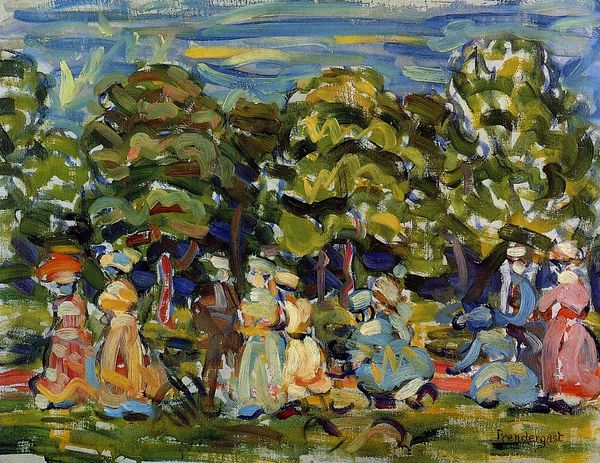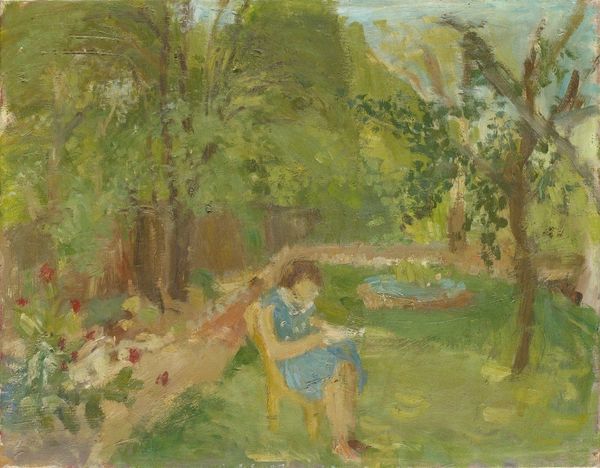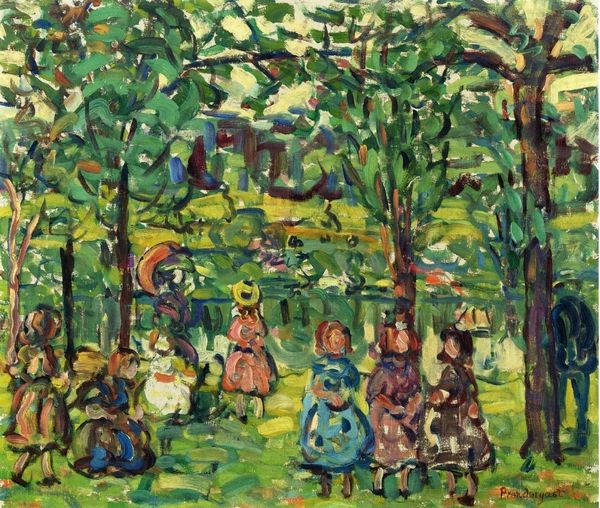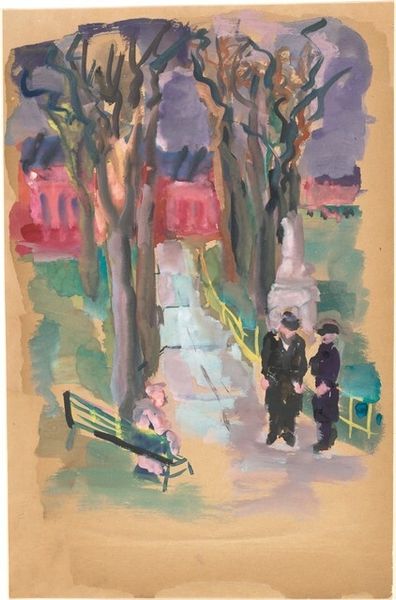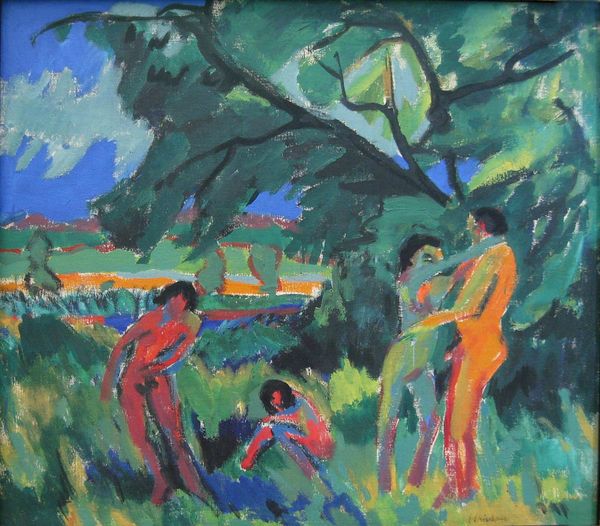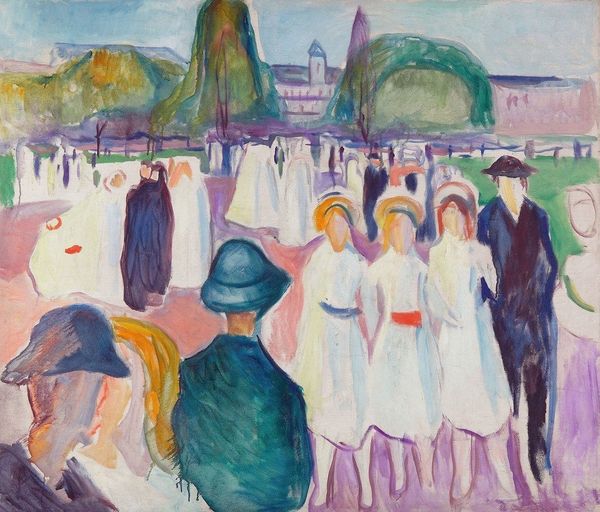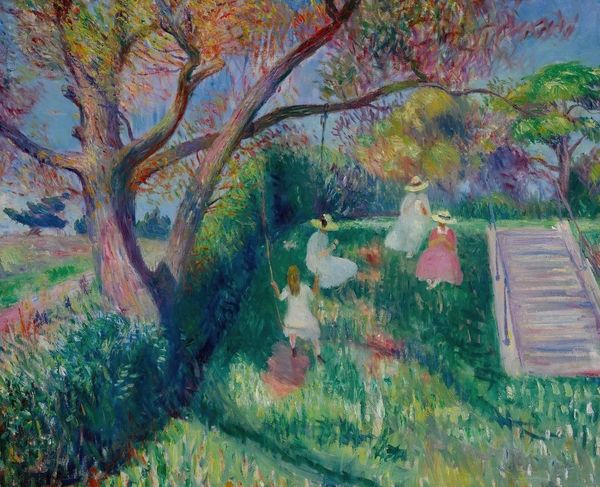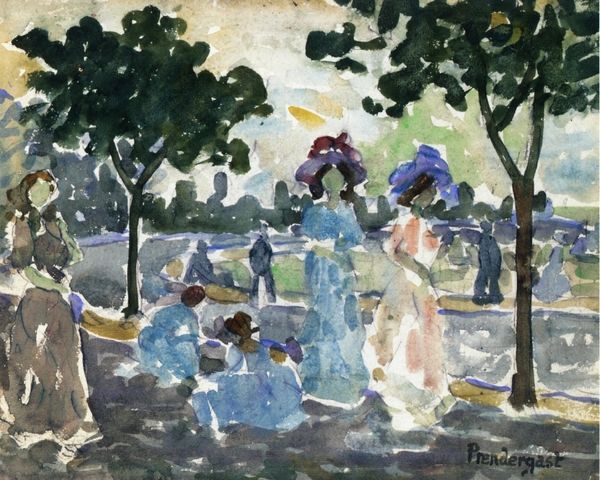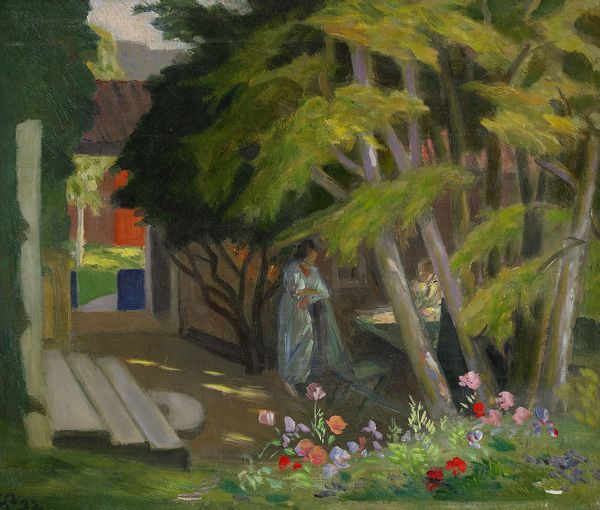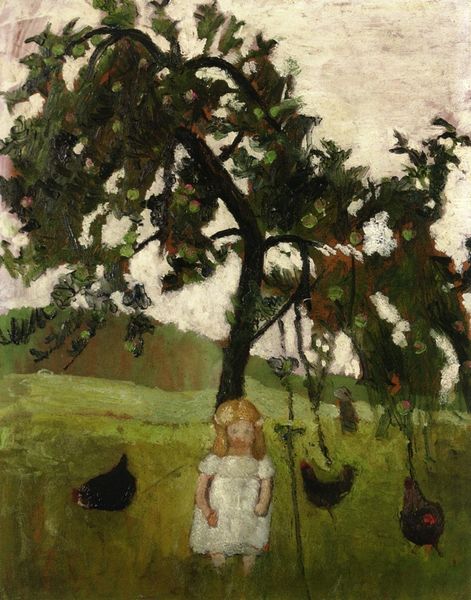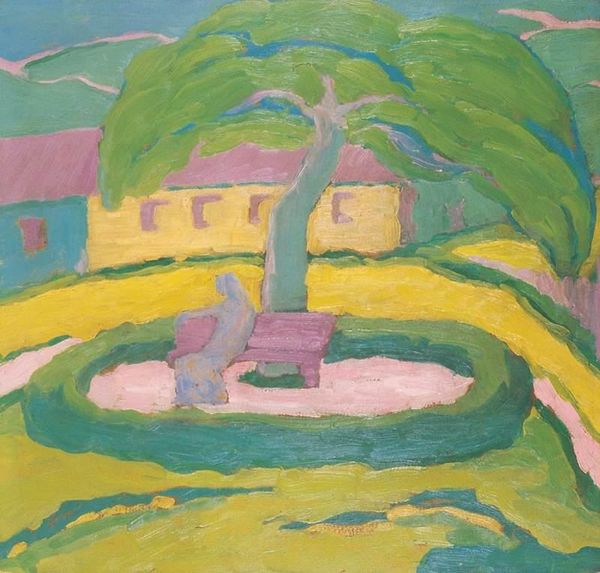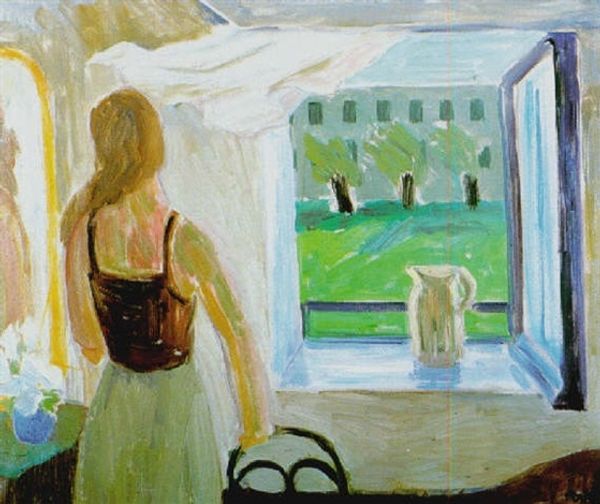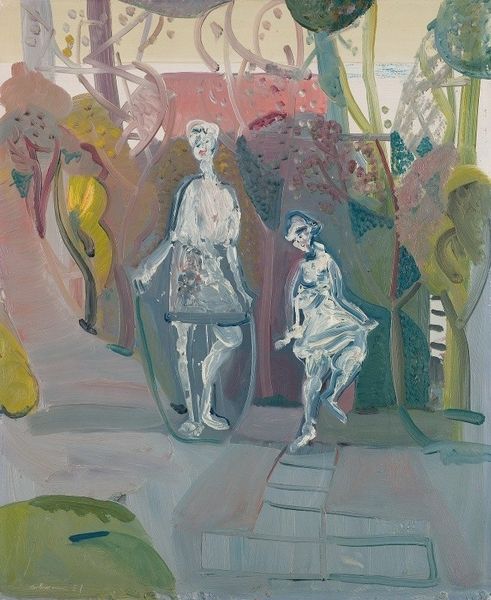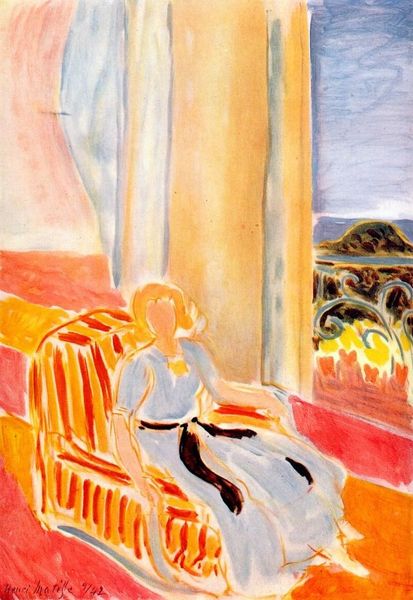
Copyright: Public Domain: Artvee
Curator: Ah, yes, Edvard Munch’s "Flirting in the Park," created in 1942. It’s a work brimming with the artist’s signature blend of vibrant colour and emotive depth. Editor: The palette is striking—that intense pink ground clashing gently with the emerald greens. It almost feels like heat radiating off the canvas. What’s going on material wise? Is that oil on canvas? Curator: Yes, Munch’s masterful use of oil paint here helps to amplify the feelings he captures on canvas. Notice the contrast in how he applies the paint, thick impasto for the foliage, a more even layer for the pink area, and thin glazes to delineate each character. Editor: Absolutely! Look at how that layering creates this wonderful depth. But there’s something almost amateur in how the piano looks… almost like a prop that fell from another production. Its whiteness sticks out against that pink in such an odd, staged kind of way. Curator: It’s definitely got that expressionist unease. A little rough around the edges, right? The figures feel like archetypes of a memory more than portraits. It speaks to how love can be a strange play, acted out on a very public stage. Editor: It does provoke reflection on the theatre of social interaction. The work feels both artificial and strangely melancholic, though. Think about what colors he might have had available to him in 1942 during the Nazi occupation of Norway—were these choices stylistic, material-based, or maybe a blend? How were they acquired? Curator: Intriguing thought! Given Munch's history, his work has often been interpreted as dealing with existential anxiety and personal torment—themes he continued to engage in throughout his career and including here in a painting that outwardly on its surface has such an "optimistic" title. Editor: Well, in looking at these techniques, these choices of scale, colors, materials, and subjects, perhaps "Flirting in the Park" isn’t just about romance, but the tension of simply surviving under occupation. Curator: I never considered how it also tells us of his perseverance and continued art practice amid political turmoil. It's almost defiance, isn't it? To continue seeing and painting beauty. Editor: It forces you to look at beauty and context at once.
Comments
No comments
Be the first to comment and join the conversation on the ultimate creative platform.
